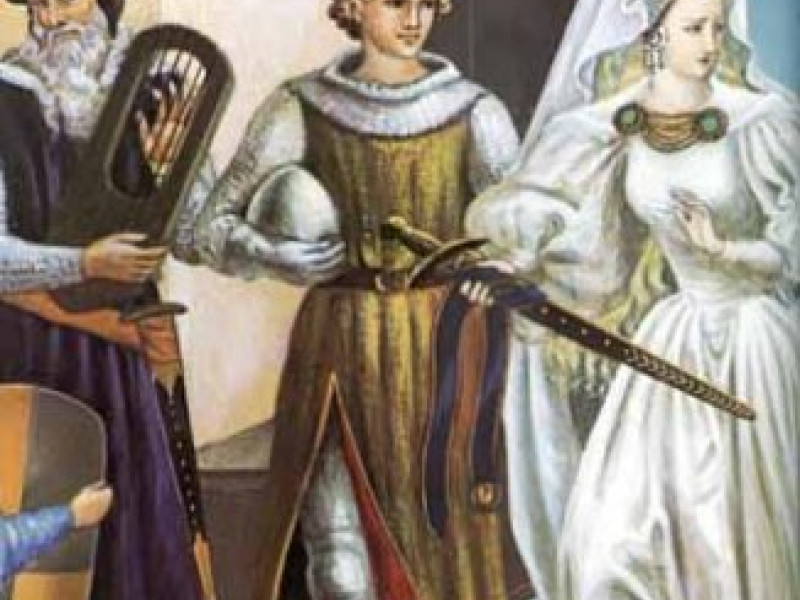Arachne
Arachne was the greatest spinner and weaver from Maeonia, a region in Asia Minor. Arachne was no princess, but the daughter of a humble dyer from Colophon. Her father was named Idmon.
Her skill in weaving were incrediblly realistic and she took great pride in her work; but that same skill would also bring about her own downfall. Many people admired her masterpieces in depicting people, animals and the background that all seemed so lifelike.
Lot of people thought she was taught by the goddess Minerva (Athena). These claims made Arachne angry. She boasted that no one taught her the art of weaving, especially the goddess of crafts and weaving.
An old woman came to her, gently telling her not to boast about her own skill without giving honour to Minerva, for to do so would offend the goddess. Arachne refused to admit the goddess' skills were superior to her own, and that she feared no goddess. Arachne rebuked the old woman for the warning. Arachne even dared to challenge the great goddess herself to prove who was the superior weaver.
With such a challenge the friendly old woman vanished, transformed into the coolly beautiful goddess – Minerva.
Even the appearance of the goddess did not cower Arachne. Arachne defiantly refused to back down in her challenge against the goddess.
Ovid then went on to describe the goddess and the mortal woman working hard and quickly at the loom, to produce a magnificent tapestry.
Minerva depicted all twelve gods and goddesses in their majestic glories, as well as other scenes where the gods punished boastful mortals who dared to challenge them.
Arachne wove her tapestry and satirised the gods and goddesses through their infidelities. Particularly Neptune (Poseidon) and Jupiter (Zeus), who seduced many mortal women, including Danae, Alcmene, Leda.
Not only did Arachne show her true artistic skills, but the garment was also absolutely perfect, as if made by the goddess herself. Minerva realised that her rival's work was better than her own work, for Arachne had displayed the crimes the gods had committed through their lust.
In anger and indignation, Minerva tore Arachne's tapestry to pieces. With the shuttle of the boxwood, the goddess struck her rival on the forehead, four times. Arachne fled in shame that the goddess shamed her, through physical beating. Mortified, Arachne hanged herself.
Either in anger or pity, Minerva turned Arachne into a spider.
Related Information
By Jimmy Joe







